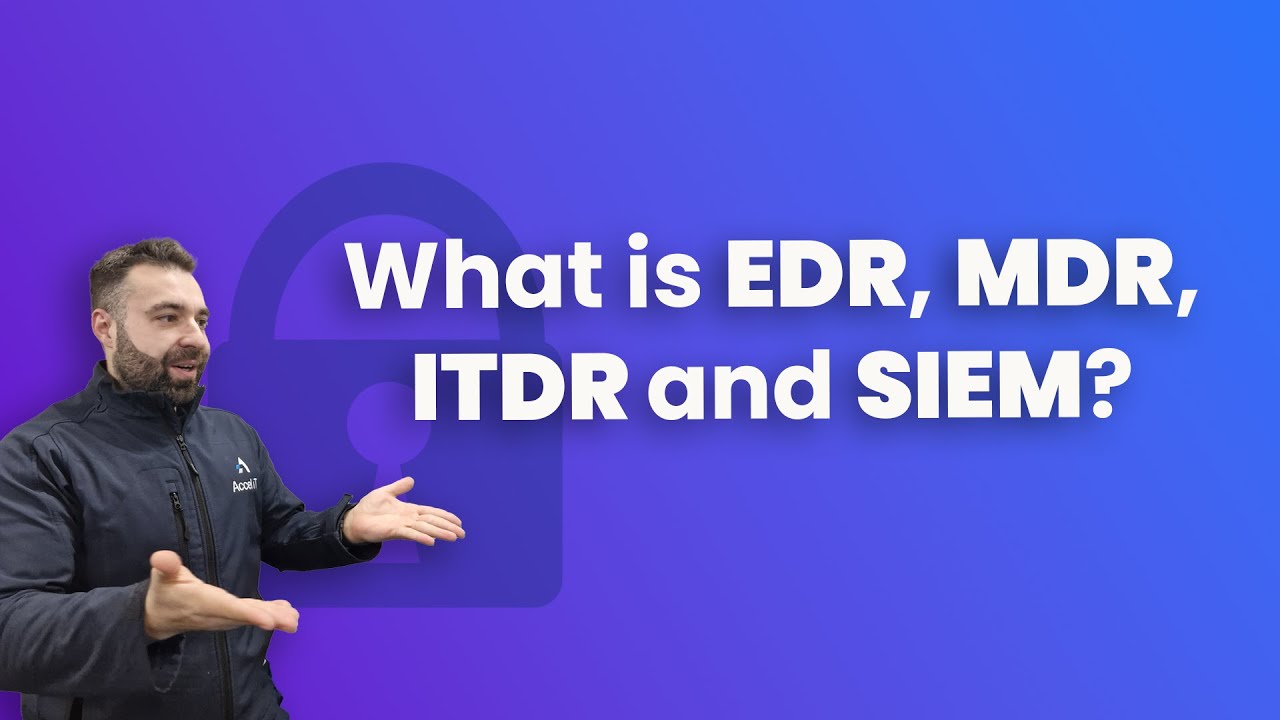For years, traditional antivirus was considered to be the first line of defence in cybersecurity. But the threat landscape has changed fundamentally. Hackers are getting more intelligent. Attacks are more specific, more complex, and more hidden. And, even worse, the outdated antivirus service that you still pay for? It just won’t cut it anymore.
In this Article (and video below), we will break down what your business really needs to stay secure today — we will use terms like EDR, SIEM, MDR, and ITDR, and explain what these descriptions mean in simple terms!
Endpoint Detection and Response (EDR)
Endpoints Detection and Response (EDR) is the next level of antivirus. Rather than blocking known threats, EDR continuously monitors your endpoints (laptops, desktops, servers) for suspicious activity – even if that suspicious activity includes a new threat altogether.
When an attacker begins to probe your systems, EDR tools pick up on it. EDR tools allow you to track their actions, isolate that device if necessary, and provide you (or your IT provider) with an incident response plan of action.
EDR is a security system that does not just simply sound the alarms, they also provide information about the perimeter (when/where the breach originated), tracking of who is was (type of threat actor), what they accessed (malware used), and can lock it all back down.
Managed Deception and Response (MDR)
MDR feels like you have your own team of cybersecurity experts 24/7.
MDR providers will monitor your EDR and SIEM, investigate alerts, respond to threats in real time and provide threat intelligence. They are there for you, watching your back even when your team is offline or asleep.
In most cases, MDR is wrapped up with an EDR, and a SIEM managed for you…That is exactly how we deliver it at Accel IT.
Security Information & Event Management (SIEM)
SIEM is your central brain.
It ingests logs and events from all throughout your environment from firewalls, email systems, file servers, and many others – and collates those events to see patterns of attack.
Imagine someone is brute forcing a login, escalates their privileges, then downloads sensitive data? Individually, those events may not trigger an alert, but collectively? SIEM sees the story and raises the alarm.
SIEM gives you visibility across your entire digital environment, as opposed to only one device at a time.
Identity Threat Detection and Response (ITDR)
ITDR is the newest player in the field and an important one.
These days attackers don’t just go for files – they go for identities. If attackers can steal credentials and act like your CEO, they don’t even need malware.
ITDR focuses on the security and monitoring of identities, such as Microsoft 365 accounts or privileged logins, for suspicious behaviour. Unusual login locations, impossible travel, or privilege escalation are all examples.
ITDR helps ensure that even if a password is stolen, an attacker would not be able to use it without detection.
Antivirus was created for yesterday’s threats. But the attackers have moved on – and it’s time for your cybersecurity to do the same.
If you’re in doubt about whether your IT provider is providing proper protection, or if you’d like a second opinion, please reach out. It is always better to find out sooner than later when you’re already damaged.




